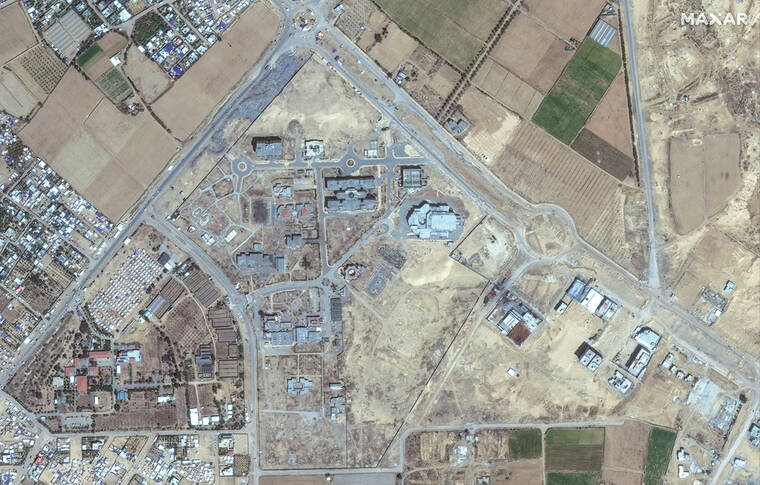For Palestinians relocating once again, conditions are ‘horrific’
As Israel’s invasion of Rafah stretches into its third week, hundreds of thousands of people fleeing the southern Gaza Strip city have encountered miserable conditions in their new encampments and shelters.
Shortages of food, clean water and bathrooms have made the experience of relocating particularly dreadful, Palestinians in Gaza say, and price gouging has made the trip unaffordable for those who need transportation, including older and disabled people.
“We’re dealing with horrific circumstances,” said Khalil el-Halabi, a retired U.N. official in his 70s who left Rafah last week for Muwasi, a beachside area that Israel has designated as a “humanitarian zone.”
“We don’t have what we need,” el-Halabi said. “We can barely even find water.”
More than 800,000 people have left Rafah in the past two weeks, a United Nations official said Monday. Israel’s military said the same day that more than 950,000 civilians in the city had relocated since it gave expanded evacuation orders. A military spokesperson said about 300,000 to 400,000 civilians remain there.
The latest wave of displacement in Gaza began May 6 when Israel sent out evacuation notices and launched military operations in eastern Rafah, which is along the border with Egypt.
More than half of the enclave’s civilians had been seeking refuge in the city — most of them after fleeing fighting elsewhere in Gaza multiple times.
Ali Jebril, 27, a wheelchair-bound basketball player, said he and his family paid $600 to have 35 people taken from eastern Rafah to Khan Younis by bus earlier this month.
Jebril, who said his wheelchair can’t navigate in the sandy beachside areas where many have resettled, has moved to a tent on the grounds of a hospital in Khan Younis.
“We’re not living a dignified life,” he said. “We’re confronting a catastrophe.”
The war, he said, has made him feel that he has become a burden on society, frequently asking others to help him.
Since Israel’s incursions into Rafah, the once overcrowded shelters and tent villages in the city have largely emptied out, Edem Wosornu, an official with the U.N. office for humanitarian affairs, told the Security Council on Monday. People have moved to areas near Khan Younis and Deir al Balah and set up makeshift camps that lack sanitation, water, drainage or shelter, she said.
“We have described it as a catastrophe, a nightmare, as hell on earth,” Wosornu said. “It is all of these, and worse.”
Since the beginning of the war in October, three-quarters of Gaza’s population has been displaced, with many people moving four or five times, she said.
Israel has cast the orders as a humanitarian step to protect civilians before further military action, which they say is necessary to root out Hamas fighters in southern Gaza. But aid groups said the additional displacement is worsening an already catastrophic humanitarian situation.



